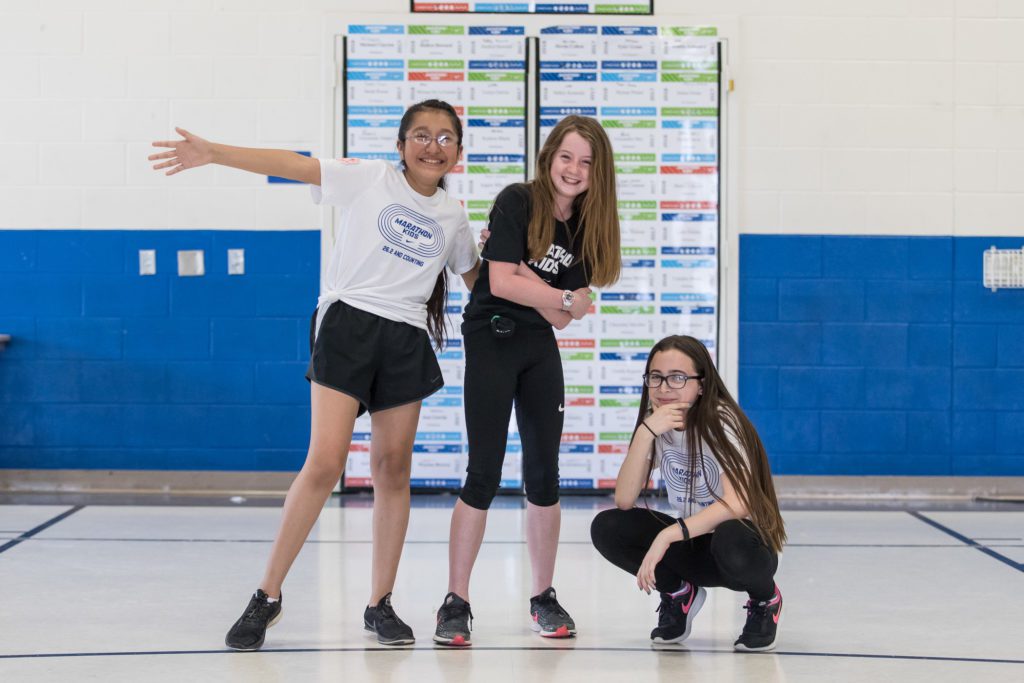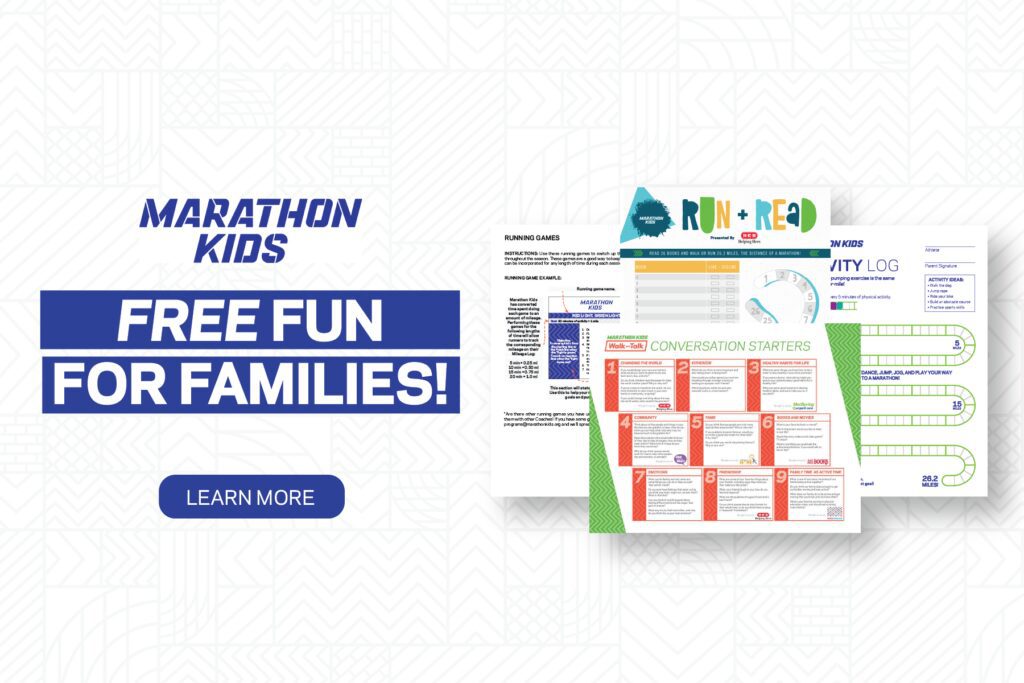
Best Indoor PE Games
By MK Editor, May 23, 2021
This post is brought to you by CROSSNET, a four-way volleyball net that was designed with the physical education teacher in mind. With just a click of a button and detachment of poles you can easily set up your net to be a variety of heights. This provides gym teachers and volleyball coaches with easy flexibility allowing them to use CROSSNET with both their younger and older students.
Looking for some great indoor PE games for getting your PE students moving when it’s wet, blazing hot, or freezing cold outside? When the weather isn’t favorable for outdoor physical activities, PE teachers and coaches have to be creative about getting kids moving indoors with potentially small space gym games, where it’s dry and climate-controlled. And while Duck, Duck, Goose is a classic for a reason—everyone loves it!—there are plenty of other great ways to get kids moving and hit their PE curriculum goals inside. Remember, 20 minutes of moderate-intensity exercise equals one mile!
1. Pickleball
A bit like tennis played with a Wiffle Ball and large, wooden, ping-pong-style paddles, Pickleball has been around for decades, but lately it’s been enjoying a bit of a renaissance in PE classes across the country. This game is perfect for indoor PE play, especially if you have either a smaller class or plenty of space for multiple games to be played at once. Pickleball encourages teamwork and as well as developing students’ hand-eye coordination and strategy skills, and there are numerous variations on the game that can be implemented to fit your particular PE class and indoor gym space.
2. Shark Zone
Lay out mats throughout the gym—blue if possible!—and then set up a series of items on top of the mats that students can stand on and move from one to the next without touching the mats. These items might include balance beams, benches, chairs, pieces of plywood and so on. Tell the students that the mats are the shark-infested waters, and the items on top are the safe zone. Then divide them into teams, and have them work and strategize together on how to move safely from one safe zone to the next without ever falling to the mats. Shark Zone is a fun team building game for kids, helps develop balance and coordination, and it’s just good, silly fun on a rainy indoor-PE day.
3. Fitness Bingo
Make up Bingo-style sheets for your students with exercises listed in the squares, along with the number of repetitions or length of time for each exercise. These might include 10 pushups, burpees or jumping-jacks; 20 seconds of mountain-climbers, jumping rope or running in place; and so on. Give each student a Fitness Bingo sheet and a marker to mark off which activities they complete as the teacher calls them out. The first person to call out “Fitness Bingo!” when they’ve marked off all their squares gets to be the leader who calls out the next round. PE teachers love to use this game as a warm up activity for their students!
4. Musical Chairs
This classic game might seem like it’s only for young children, but the truth is that students of any age can enjoy the silliness and fun that Musical Chairs provides. Best of all, this game gets kids moving while also honing their listening skills. The basic, classic format of the game involves setting up chairs in a circle with their backs to the inside of the circle, starting with one fewer chair than the total number of students playing the game. Students form an outer ring around the chairs and walk, skip, run or jump around the chairs to music. When the teacher hits Pause at random moments, everyone must scramble to find a seat. Whoever doesn’t find a seat is “out”; set one chair to the side and continue the game in rounds until there’s only one final student standing (or sitting, as the case may be)!
Depending on the age of your PE students, you can add fun twists to the game to switch things up and help your students work toward different fitness goals. For example:
Students who are “out” must do jumping-jacks, high-knees or pushups while the other students are busy moving to the music.
Walking, running, skipping and hopping are all fun ways to move around the circle as the music plays, but students can also do other fitness-building movements around the chairs, such as lunges, dancing, high-knees, running backward or somersaults (if the game can be played on mats or another soft surface).
Don’t have chairs in your gym or other workout space? No problem — Musical Chairs can be played without chairs as a move-and-freeze game, in which the last student to freeze when the music pauses is “out.”
Add extra movement requirements for students to perform as quickly as possible when the music stops: Have them do five jumping-jacks or touch their heads, shoulders, knees and toes before finding a chair.
5. CROSSNET
This four-square version of volleyball is a super-fun take on the traditional game. Incredibly easy to set up, with adjustable height levels for any age group, it’s a blast for kids from elementary up through high school. CROSSNET targets throwing and catching skills and helps kids develop their hand-eye coordination, while tapping into their competitive natures. It doesn’t take up a lot of room, making it a perfect indoor PE game for smaller spaces or for interval stations set up throughout the gym.
6. Red Light, Green Light
This is another simple movement game that seems childish but can be lots of silly fun for all ages, and which can be used to build cardio endurance, strength or flexibility as well as skills related to listening, observing and following instructions.
In Red Light, Green Light, students line up on the starting line; when the teacher or leader calls out “Green light,” everyone advances toward the finish line until the teacher/leader calls out “Red light,” at which point everyone must freeze as quickly as possible. The game is played until everyone has crossed the finish line. The movements students use in moving toward the finish line are up to them and the teacher to decide; they can run, skip, dance, or do jumping-jacks, high-knees, lunges or even burpees. The possibilities are nearly endless!
The teacher can also add in a “yellow light” twist: When they call out “Yellow light,” students must slow down in whatever movement they are performing. Then, when the teacher calls out “Red light,” students must freeze in place and hold their form or position until “Green light” is called out once again. The slow movements followed by holding a particular position can help students build both muscle and endurance.

7. Indoor Free-Play Stations
Many kids love having some free choice and autonomy built into their school day, and indoor PE days are perfect for blending free choice and autonomy with movement and fun. Set up stations around the gym (or wherever you’re meeting with students) and have children cycle through activities of their choice. These can include activities that develop their persistence as well as their spatial awareness and hand-eye coordination, such as hula-hooping or underhand throwing with bean bags; plyometrics activities, such as jumping rope, jumping-jacks or long jumps; strength-training activities, such as pushups or planks; or cardio endurance builders, such as burpees, high-knees or running in place.
8. Yoga and Mindfulness
A chilly, rainy day can be perfect for helping students develop mindfulness with an indoor yoga and stretching session. Yoga is great since it can be modified to work for almost any age and ability level, and the benefits for students extend well beyond the gym. When students have a few minutes during the school day to calm down and focus on their breathing or how certain stretches or poses make their bodies feel, they can develop mindfulness over time. This can help improve their test scores and focus in class as well as their mood and confidence levels.
9. Cat and Mouse
This game is like Flag Tag, except the flags are pieces of cloth or string tucked into students’ waistbands to represent tails. One or two students can be the cats that chase the mice; mice are “out” when the cats pull out their tails.
10. Hula Hoop Tic-Tac-Toe
This game requires nine hula hoops and ten beanbags—five of one color and five of another. Lay out the nine hula hoops on the floor like a tic-tac-toe grid and then divide students into two teams. Both teams must line up at a starting line some distance away from the hula hoops. When the teacher says “Go,” Player One from the first team runs to the hula hoops and drops a beanbag into the hoop of their choice, and then runs back as quickly as possible. As soon as that player returns, Player One from the second team does the same thing, running to the hoops and dropping a beanbag into another hoop, attempting to block the other team from winning, just like in regular tic-tac-toe. If any player accidentally kicks the hula hoops out of formation, they must stop and re-form the tic-tac-toe grid. Players who are standing in line waiting for their turn can keep moving with jumping jacks, high-knees, or running or marching in place. Hula hoop tic-tac-toe games move quickly; an average-sized class will play several games before every player has had a turn, and then they can start all over again.
11. Gym Laps
When you have to get a group of students moving indoors, sometimes it’s best to just get back to basics. If you can’t have students walk or run on the outdoor track, why not have them walk or run the perimeter of the gym? If you’re the coach of a Marathon Kids run club, your students can log miles just as well inside as outside! You can also have them use the hallways (quietly, of course, when class is in session!). Make it fun by splitting students into relay teams or having them track their own steps or mileage in a data spreadsheet. Students can also do laps by lining up and having the student at the back of the line walk or run as quickly as they can to the front of the line, making slow group forward progress by taking turns until the finish line.
ABOUT MARATHON KIDS
Marathon Kids is on a mission to get kids moving. The nonprofit organization offers free physical education programming through Marathon Kids Connect, a cloud-based PE and run club management platform that includes a mobile app for digital activity-tracking.
Make Marathon Kids Your PE Partner

